Are Chinese dishes dangerous for your health?
When it comes to food, many people wonder about the safety and health implications of what they eat. One cuisine that often raises questions is Chinese food. Are Chinese dishes dangerous for your health? The answer is not straightforward; it depends on a variety of factors, including ingredients, preparation methods, and individual health conditions. Let’s delve deeper into these factors to give you a clearer picture.
Chinese cuisine is diverse, offering everything from spicy dishes to lighter steamed options. However, certain elements within this cuisine can potentially pose health risks. Here are some key aspects to consider:
High Sodium Content
Many Chinese dishes utilize soy sauce, oyster sauce, and other seasonings, which can lead to high sodium levels. Excessive sodium intake can result in health issues such as high blood pressure, heart disease, and stroke. If you’re concerned about sodium, consider the following:
- Opt for low-sodium soy sauce when possible.
- Ask for lighter sauces or for sauces served on the side.
- Balance high-sodium meals with fresh vegetables and whole grains.
Use of Additives and Preservatives
Some Chinese restaurants may use MSG (monosodium glutamate) as a flavor enhancer. While the FDA considers MSG safe for most people, some individuals report sensitivity to it, which can lead to headaches and nausea. To be cautious:
- Inquire if MSG is used in your dish.
- Choose fresh, less processed foods.
- Look for restaurants that advertise “no MSG” policies.
Fried Foods
Chinese cuisine offers many delicious fried dishes, such as spring rolls and crispy wontons. While tasty, these foods can be high in unhealthy fats and calories. Frequent consumption may lead to weight gain and related health problems. To enjoy these favorites while staying healthy:
- Limit your consumption of fried items.
- Choose steamed or grilled dishes over fried options.
- Look for restaurants that use healthier cooking oils or methods.
Quality of Ingredients
Not all Chinese restaurants use fresh or high-quality ingredients. Some establishments may opt for cheaper, processed meats or vegetables loaded with pesticides. To ensure you’re eating quality food:
- Research the restaurant’s sourcing practices.
- Go for places known for using fresh, organic ingredients.
- Read reviews about food quality before dining out.
Balance is Key
One of the crucial aspects of enjoying Chinese cuisine is balance. It’s possible to indulge in your favorite dishes without compromising your health. Here are some tips:
- Fill your plate with a variety of vegetables.
- Pair fried or rich dishes with lighter options like soups or salads.
- Stay mindful of portion sizes, especially when ordering takeout.
It is also worthwhile to mention that cultural differences in cooking techniques and ingredients may lead to various interpretations of dishes. Authentic Chinese cuisine often emphasizes balance, with garlic, ginger, and spices providing flavor without relying heavily on salt or unhealthy fats.
For those interested in a healthier approach to Chinese dishes, consider the following suggestions:
- Request less oil and fewer sauces.
- Choose dishes that emphasize vegetables like stir-fried bok choy or broccoli.
- Explore different cooking styles, such as steaming or simmering.
Ultimately, the question of whether Chinese dishes are dangerous for your health depends largely on how they are prepared and consumed. By making informed choices, you can enjoy the rich flavors of Chinese cuisine without compromising your health.
To further understand the health impacts of various cuisines and to get additional tips on eating healthy when you dine out or order in, check out resources like Healthline or Eatright.org.
| Food Type | Sodium Content (mg) | Saturated Fat (g) |
|---|---|---|
| Fried Rice | 800 | 2.5 |
| Sweet and Sour Chicken | 1500 | 6 |
| Steamed Broccoli | 50 | 0.6 |
With a little awareness and mindfulness, you can savor the rich, delightful flavors of Chinese cuisine while keeping an eye on your health. Enjoy your meal!
Common ingredients in Chinese cuisine and their health implications
Chinese cuisine is beloved around the world for its rich flavors and diverse ingredients. However, some common ingredients can raise health concerns. Understanding how these ingredients affect your health can help you make informed choices when enjoying Chinese food.
Common Ingredients in Chinese Dishes
Here’s a list of some frequently used ingredients in Chinese cuisine:
- Soy Sauce
- MSG (Monosodium Glutamate)
- Rice
- Sesame Oil
- Pickled Vegetables
- Five-Spice Powder
Soy Sauce
Soy sauce is a staple in many Chinese dishes, adding depth and a savory taste. While it can enhance flavor, it is high in sodium. Excessive sodium intake can lead to hypertension, water retention, and other cardiovascular issues. If you are watching your salt intake, consider using low-sodium soy sauce or limiting portion sizes.
Health Tip:
When dining out, you can ask for your dish to be made with less soy sauce to manage sodium levels.
MSG (Monosodium Glutamate)
MSG is often used to boost flavor in Chinese dishes. While the FDA considers it safe in moderation, some people report sensitivity to MSG, experiencing headaches or nausea after consumption. If you are sensitive, it’s best to inquire whether your dish contains MSG.
Health Tip:
Many restaurants offer dishes without MSG upon request. It’s always best to ask if you are concerned about your reaction to this ingredient.
Rice
Rice is a primary carbohydrate source in Chinese cuisine, often served alongside stir-fries and other dishes. White rice can cause rapid spikes in blood sugar, making it a less ideal option for those monitoring glucose levels. In contrast, brown rice offers more fiber and nutrients, which can aid in digestion and provide a sense of fullness.
Health Tip:
Opt for brown or wild rice when available, as they provide more benefits than traditional white rice.
Sesame Oil
Sesame oil adds a delightful aroma and nutty flavor to dishes. However, it is calorie-dense, so it should be used sparingly. If consumed in moderation, it can even be beneficial due to its healthy fats and antioxidants. Just be mindful of how much is being used in your favorite meals.
Health Tip:
Balancing sesame oil with other cooking oils can enhance flavor without piling on too many calories.
Pickled Vegetables
Pickled vegetables are often served as sides or garnishes. While they provide flavor and crunch, they can be high in sodium and preservatives. If you enjoy pickled vegetables, consider making your own at home, using less salt and sugar to control the health implications.
Health Tip:
Pair pickled vegetables with fresh ones to add crunch without excessive sodium.
Five-Spice Powder
This aromatic blend usually contains star anise, cloves, Chinese cinnamon, Sichuan peppercorn, and fennel seeds. While these spices have various health benefits, including anti-inflammatory properties, they should be consumed in moderation. For example, excessive amounts of star anise can be harmful in large quantities, especially to pregnant women.
Health Tip:
Use Five-Spice powder sparingly to enjoy its flavors while reaping the health benefits without taking in too much of any particular spice.
While Chinese dishes can be delicious and flavorful, it’s essential to be aware of the common ingredients used and their health implications. By understanding these components and making thoughtful choices, you can enjoy your favorite Chinese cuisine without compromising your health. For more information on healthy eating, check out resources from groups like Healthline or the Academy of Nutrition and Dietetics.
The role of MSG in Chinese food: Myth vs. Reality
The use of monosodium glutamate (MSG) in Chinese cuisine is a topic that sparks heated discussions among food lovers and health experts alike. While many appreciate MSG for enhancing flavors, others warn of possible health risks. To understand the role MSG plays in Chinese food, it’s essential to sift fact from myth.
MSG is a flavor enhancer derived from glutamic acid, an amino acid found naturally in foods like tomatoes and cheese. It is most commonly associated with Chinese restaurants, where it is used to amplify the umami taste, giving dishes a richer flavor. However, this ingredient has been the subject of controversy for decades.
Common Myths Surrounding MSG
Myths about MSG often lead to misconceptions regarding its safety and effects on health. Here are some common beliefs:
- MSG Causes Allergic Reactions: Many people claim that MSG triggers headaches and allergic reactions, but scientific studies have not consistently supported this. The FDA recognizes MSG as safe for consumption.
- MSG Is Derived from Hazardous Chemicals: While MSG is a synthesized compound, it is made through a fermentation process similar to that used for yogurt and vinegar. This process does not involve toxic chemicals.
- All Chinese Food Contains MSG: Not all Chinese restaurants use MSG. Many chefs take pride in preparing dishes without it, opting for fresh ingredients and natural flavors instead.
The Reality of MSG Consumption
So, what does the research say about MSG safety? Multiple studies have shown that the average person can consume MSG without adverse effects. The FDA, alongside global health organizations, considers MSG safe when consumed in typical quantities found in food.
However, some individuals might experience sensitivity to MSG, a condition that is not well understood. Those who are sensitive may report symptoms such as headache, flushing, or nausea. If you notice any discomfort after consuming food containing MSG, it’s wise to avoid it in the future.
MSG and Health: What Science Reveals
To provide a clearer picture, here’s a brief look at various studies regarding the health impacts of MSG:
| Study Focus | Results |
|---|---|
| Headaches | Minor instances reported, but no significant evidence linking MSG to headaches in the general population. |
| Eating Habits | Foods with MSG can lead to greater satisfaction and fullness, potentially helping with portion control. |
| Obesity Links | Some studies suggest high MSG consumption may correlate with obesity, but this remains debated. |
| Neurotoxicity | Research in animals showed potential neurotoxic effects, but results in humans are inconclusive. |
Natural Alternatives to MSG
If you’re cautious about MSG, you can explore these natural flavor enhancers:
- Umami-rich ingredients: Consider using mushrooms, tomatoes, or aged cheese.
- Herbs and spices: Fresh herbs like basil and cilantro can add depth to your dishes.
- Fermented foods: Sauerkraut and kimchi can enhance flavor profiles while being gut-friendly.
When it comes to Chinese cuisine, it’s essential to communicate with the staff if you have any dietary restrictions or preferences related to MSG. Many restaurants are happy to accommodate requests for meals without this ingredient.
If you want to explore more about MSG and its effects, websites like FDA and NCBI provide in-depth information and studies.
The debate surrounding MSG in Chinese dishes often stems from misunderstanding and myths. The ingredient plays a significant role in flavor enhancement without universally posing significant health risks to the general population. By being informed and aware of your body’s responses, you can continue to enjoy the rich flavors of Chinese cuisine while making choices that align with your health preferences.
Health benefits of traditional Chinese herbs used in cooking
Traditional Chinese herbs play a significant role in Chinese cooking, not only adding unique flavors but also providing numerous health benefits. Integrating these herbs into your meals can enhance overall wellness. Let’s explore some common Chinese herbs used in cooking and their health advantages.
Common Traditional Chinese Herbs and Their Benefits
- Astragalus (Huang Qi)
- Boosts the immune system
- Enhances energy levels
- May improve heart health
- Ginger (Sheng Jiang)
- Reduces nausea and aids digestion
- Has anti-inflammatory properties
- May enhance respiratory health
- Goji Berries (Gou Qi Zi)
- Rich in antioxidants
- Supports eye health
- May improve liver function
- Licorice Root (Gan Cao)
- Acts as a natural sweetener
- May help soothe gastrointestinal issues
- Has anti-inflammatory effects
How to Use These Herbs in Cooking
Traditional Chinese herbs into your meals is quite simple. You can add them to soups, stir-fries, and sauces. This not only enhances the taste of your dishes but also maximizes their health benefits. Here are some quick tips:
- Make a herbal broth by simmering astragalus and ginger for a flavorful base.
- Add goji berries to stir-fried vegetables for a sweet touch and added nutrients.
- Use licorice root in marinades to bring a sweetness while aiding digestion.
The Importance of Using Quality Ingredients
When cooking with herbs, it’s crucial to source high-quality ingredients. Look for reputable suppliers that specialize in Chinese herbs. This ensures that the herbs used maintain their potency and beneficial properties. Websites such as Modern Herbal Medicine offer insights into where to buy authentic ingredients.
Another excellent resource for learning about the health benefits and culinary uses of Chinese herbs is The Art of Chinese Cooking. Their comprehensive guides can help expand your understanding and usage of these herbs in your daily cooking.
Possible Side Effects and Considerations
While traditional Chinese herbs are generally safe, it is essential to be aware of their interactions and potential side effects. Some herbs may not be suitable for everyone, especially those who are pregnant, nursing, or on medications. It’s always a good idea to consult a healthcare professional before adding new herbs to your diet, particularly in large amounts.
| Herb | Benefits | Considerations |
|---|---|---|
| Astragalus | Boosts immunity | May lower blood sugar |
| Ginger | Aids digestion | Avoid if you have gallstones |
| Goji Berries | Rich in antioxidants | May interact with blood thinners |
| Licorice Root | Soothes gastrointestinal issues | Can raise blood pressure if consumed in excess |
Final Thoughts on Traditional Chinese Herbs
Integrating traditional Chinese herbs into your cooking not only elevates the flavors of your meals but also promotes numerous health benefits. Remember to use these herbs mindfully and in moderation. By understanding their properties and sourcing high-quality ingredients, you can enjoy a healthy, flavorful addition to your diet. For more detailed information on herbal remedies, consider visiting The Chinese Herbal Society for a wealth of knowledge and resources.
Comparing cooking methods: Stir-frying versus deep-frying in Chinese dishes
When you think of Chinese cuisine, two popular cooking methods come to mind: stir-frying and deep-frying. Each method brings its unique flavor and texture to dishes, but they also differ significantly in health implications, cooking time, and culinary techniques. Understanding these differences can enhance your cooking and help you make healthier choices.
Stir-frying is a fast and versatile cooking method that involves cooking food quickly over high heat in a small amount of oil. It is commonly used in Chinese cooking for vegetables, meats, and seafood, and helps preserve the food’s essential nutrients and flavors. Because the cooking time is short, ingredients retain their color and crunch, which not only looks appealing but is also beneficial from a nutritional standpoint.
On the other hand, deep-frying involves submerging food completely in hot oil. This method creates a crispy texture and a rich flavor that many find irresistible. However, it also significantly increases the calorie content and fat intake of your meals, which can pose health risks when consumed excessively. Let’s dive deeper into the comparisons between these two popular Chinese cooking methods.
Health Impacts of Cooking Methods
While both cooking methods yield delicious results, the health implications can vary widely:
| Criteria | Stir-Frying | Deep-Frying |
|---|---|---|
| Oil Usage | Uses less oil (1-2 tablespoons) | Requires a lot of oil (often several cups) |
| Caloric Content | Generally lower in calories | Higher in calories due to oil absorption |
| Nutrient Retention | Retains nutrients due to shorter cooking time | Nutrients may be lost due to high temperatures |
| Flavor and Texture | Retains natural flavors and a crunchy texture | Creates a crispy and rich flavor |
Cooking Techniques
Stir-frying involves a quick cooking technique that emphasizes preparation and speed. Here are some essential tips for successful stir-frying:
- Use a wok: A well-seasoned wok helps distribute heat evenly.
- Prep ingredients: Cut vegetables and meats into uniform sizes for even cooking.
- High heat: Preheat the pan properly before adding ingredients.
- Add ingredients gradually: Start with proteins; add vegetables in order from longest to shortest cooking time.
Deep-frying, while perhaps less healthy, can be mastered with the right techniques. Here are some tips to make the best of deep-frying:
- Choose appropriate oil: Use oils with high smoke points, like canola or peanut oil.
- Temperature control: Maintain the oil at a consistent temperature (around 350°F or 175°C) for best results.
- Don’t overcrowd: Fry in small batches to keep the temperature stable and ensure even cooking.
- Drain well: After frying, drain excess oil by placing food on paper towels.
Flavor Enhancements
The flavor profile of each method also differs. Stir-frying can incorporate various flavor-enhancing elements like garlic, ginger, and soy sauce, which quickly infuse into the ingredients. In contrast, deep-fried dishes can be seasoned after cooking or paired with sauces to enhance taste.
Choosing between stir-frying and deep-frying in Chinese dishes often comes down to health considerations and personal preferences. If you’re looking to maintain a balanced diet while enjoying delicious food, stir-frying may be your best bet. However, it’s essential to indulge in deep-fried treats in moderation and be mindful of portion control.
For more information on cooking techniques and recipes, you can visit Chinese Food or check out the guidelines at Food Network.
The method you choose can significantly affect both the taste and health value of your Chinese dishes. By understanding the distinctions between stir-frying and deep-frying, you can make informed choices that benefit your well-being while enjoying the rich flavors of Chinese cuisine.
Dietary concerns: Allergy risks in Chinese food
When indulging in Chinese cuisine, it’s important to consider dietary concerns, especially regarding potential allergies. Many traditional dishes contain common allergens that can pose health risks for sensitive individuals. Understanding the ingredients commonly used in Chinese food is essential to make informed decisions about what you eat.
Chinese cuisine often features a variety of ingredients, some of which are known to trigger allergic reactions. Here are the most common allergens found in Chinese food:
- Peanuts: Frequently used in sauces and garnishes, they can cause severe allergic reactions in sensitive individuals.
- Shellfish: Essential to many seafood dishes, shellfish allergies are among the most common food allergies globally.
- Wheat: Used in soy sauce and noodle dishes, wheat can be a concern for those with gluten intolerance or celiac disease.
- Eggs: Commonly found in fried rice and noodle dishes, they can be problematic for individuals with egg allergies.
- Sesame seeds: Often used for flavoring or garnishing, these tiny seeds can trigger allergic reactions in some people.
Considering these ingredients, it’s vital to understand how you can protect yourself when dining out or cooking at home. Here are some useful tips to navigate allergy risks in Chinese food:
- Communicate: When dining at a Chinese restaurant, always inform the staff about your allergies. Most establishments are willing to accommodate your needs.
- Read Labels: If you are buying packaged Chinese sauces or instant foods, check the ingredient label carefully for allergens.
- Opt for Safe Dishes: Consider choosing dishes that are less likely to contain common allergens, like steamed vegetables or plain rice.
- Ask Questions: Don’t hesitate to ask about how a dish is prepared, including the use of sauces and seasonings that may contain allergens.
For those who prefer home cooking, understanding how to substitute ingredients can help you enjoy Chinese dishes safely. Here are some ingredient alternatives for common allergens:
| Allergen | Alternative |
|---|---|
| Peanuts | Sunflower seed butter or tahini (for a nut-free option) |
| Soy Sauce (Wheat) | Tamari (gluten-free soy sauce) |
| Shellfish | Tofu or chicken for a different protein choice |
| Eggs | Flaxseed meal or chia seeds mixed with water (as a binding agent) |
| Sesame Seeds | Pumpkin seeds for garnishing |
In addition, being aware of cross-contamination is crucial when ordering food. Many restaurants prepare multiple dishes in the same space, increasing the risk of allergy exposure. For individuals with severe allergies, consider dining at establishments that specialize in allergen-free cooking or provide clear information about their food preparation methods.
Furthermore, it’s beneficial to consult with a healthcare professional or dietitian specializing in food allergies. They can provide personalized advice tailored to your dietary needs. Resources such as Food Allergy Research & Education can offer additional insights and assistance for managing food allergies.
While Chinese cuisine offers a variety of delicious options, it can also present allergy risks, especially if you’re not careful with your selections. By being informed and proactive about your dietary concerns, you can still enjoy Chinese food without compromising your health.
To facilitate safer dining experiences, consider reviewing restaurant health scores and customer ratings on platforms such as Yelp to identify establishments that prioritize food safety and customer health.
Tips for making healthier choices when dining on Chinese cuisine
When it comes to dining on Chinese cuisine, many people wonder about healthier options. Chinese dishes are diverse and delicious; however, some can be heavy on calories, sodium, and unhealthy fats. By making informed decisions, you can still enjoy your favorite meals while prioritizing your health.
Choose Steamed Dishes
Steamed dishes are often healthier alternatives compared to fried options. Steaming retains nutrients and cuts down on added oils. Look for staples like:
- Steamed dumplings
- Steamed vegetables
- Fish or chicken steamed with ginger and soy sauce
These dishes can provide a healthy dose of protein and vitamins without unnecessary calories.
Selecting the Right Sauces
Sauces can elevate the flavor of your dish but often come packed with sodium and sugar. Here are some tips for navigating sauces:
- Ask for sauces on the side to control how much you consume.
- Opt for lighter sauces like soy sauce, vinegar, or chili sauce.
- Avoid heavy options such as teriyaki or sweet and sour sauce, which often add hidden sugars.
Control Portion Sizes
Portion sizes in restaurants are often large. To avoid overeating, consider the following strategies:
- Share a main dish with someone at your table.
- Order a smaller appetizer as your main course.
- Use a smaller plate to manage portion sizes effectively.
By being mindful of your portions, you can enjoy the food without the guilt.
Opt for Whole Grains
When choosing rice or noodles, consider going for whole grain options. Brown rice or whole wheat noodles are rich in fiber, which can regulate digestion and make you feel fuller for longer. Many restaurants now offer these alternatives, so don’t hesitate to ask!
Load Up on Vegetables
Vegetables are a fantastic way to add nutrients to your meal without many calories. When ordering, opt for dishes that include a variety of veggies. Keep an eye out for:
- Stir-fried mixed vegetables
- Vegetable spring rolls
- Broccoli beef or chicken
These additions not only boost your vitamin intake but also add color and texture to your meal.
Healthy Proteins Matter
Proteins are essential in maintaining energy levels. Instead of fried meats, try to choose grilled or steamed options. Here are some to consider:
- Chicken or tofu in black bean sauce
- Fish with a ginger soy glaze
- Lean cuts of pork or beef with vegetables
These selections provide satisfying protein without the extra calories from frying.
Mind Your Drinks
Be aware of the beverage choices you make during your dining experience. Traditional drinks like soda can add extra sugar and calories. Instead, consider:
- Water with lemon
- Green tea, which is known for its health benefits
- Unsweetened iced tea for a refreshing option
Your drink choices can significantly affect your overall meal health.
Stay Informed About Ingredients
Never hesitate to ask your server about specific ingredients in the dishes. Some meals might contain hidden additives or unhealthy elements. For instance, some sauces may have MSG, which can lead to health issues for some individuals. Understanding what’s in your food is key to making healthy choices.
No matter where you are dining, these tips will help you enjoy Chinese cuisine while keeping your health in check. Through careful consideration of what to order and how much to eat, you can relish in the rich flavors and cultural aspects of Chinese food without compromising your well-being.
For more tips on healthy dining, check out Eat Right for expert nutrition advice and strategies.
Key Takeaway:
When we talk about the question, "Are Chinese dishes dangerous for your health?", it is vital to consider the nuances of Chinese cuisine rather than painting it with a broad brush. Chinese food, like any other cuisine, has both healthy and unhealthy elements. It is crucial to understand the common ingredients found in Chinese dishes, such as soy sauce, fried foods, and various seasonings. While some of these can lead to health concerns like high sodium or elevated cholesterol levels, it’s equally essential to recognize the nutritious components often present, such as vegetables and lean proteins.
The conversation surrounding MSG (monosodium glutamate) in Chinese food is often steeped in myth. Many have blamed MSG for various health issues; however, research shows that it is generally considered safe when consumed in moderation. Understanding the role of MSG can help quell unnecessary fears and enhance your enjoyment of these dishes.
Exploring traditional Chinese herbs reveals another layer of health benefits. Ingredients like ginger, garlic, and various spices are not only flavorful but also contain properties that can boost your immune system and aid digestion. They often contribute positively to your overall health when integrated wisely into meals.
When it comes to cooking methods, stir-frying is commonly healthier than deep-frying, often used in Chinese cuisine. Stir-frying allows for the use of less oil, preserving the nutrients in the food and reducing calorie content. This technique also highlights the vibrant colors and flavors of vegetables, making your meal both delicious and healthier.
Dietary concerns in Chinese food can often arise from allergies. Ingredients like peanuts and sesame are common allergens present in many dishes, making it important for individuals with allergies to approach Chinese cuisine with caution.
To make healthier choices while dining on Chinese food, consider opting for steamed options over fried ones and don’t shy away from asking for modifications that minimize oil and sodium. Look for dishes packed with vegetables and balanced proteins to maximize your meal’s healthfulness.
Chinese cuisine can be enjoyed healthily with informed choices. While there are both risks and benefits associated with different dishes and ingredients, understanding these factors allows you to savor the rich flavors of Chinese food without compromising your health. Awareness and moderation are key to experiencing the many delights of Chinese cuisine healthily.
Conclusion
Evaluating whether Chinese dishes are dangerous to your health involves a nuanced understanding of various factors, including ingredients, cooking methods, and individual health concerns. Common ingredients like soy sauce and various oils can have health implications, particularly for those mindful of sodium intake or fat consumption. However, these dishes often include beneficial elements, such as traditional Chinese herbs known for their health-promoting properties.
The discussion around monosodium glutamate (MSG) often raises eyebrows; yet, recent studies suggest that the fears surrounding MSG may be exaggerated, and moderate consumption is generally safe for most people. Additionally, the choice of cooking methods plays a significant role in healthfulness. While deep-frying can add unwanted fats and calories, stir-frying is a healthier alternative that helps retain nutritional value in vegetables and meats.
Moreover, awareness of potential allergy risks in Chinese cuisine is crucial. The use of common allergens, such as peanuts and shellfish, necessitates caution for those with specific dietary restrictions. To enjoy Chinese food while prioritizing health, you can make informed choices—opt for steamed dishes, request less sauce, and favor plenty of vegetables.
In sum, Chinese cuisine can fit into a healthy diet if you pay attention to ingredients, cooking methods, and your own dietary needs. By making educated choices and perhaps even exploring the rich array of traditional herbs, you can savor the flavors while keeping your health in check. Enjoying Chinese dishes thoughtfully can lead you to a balanced and delightful dining experience.
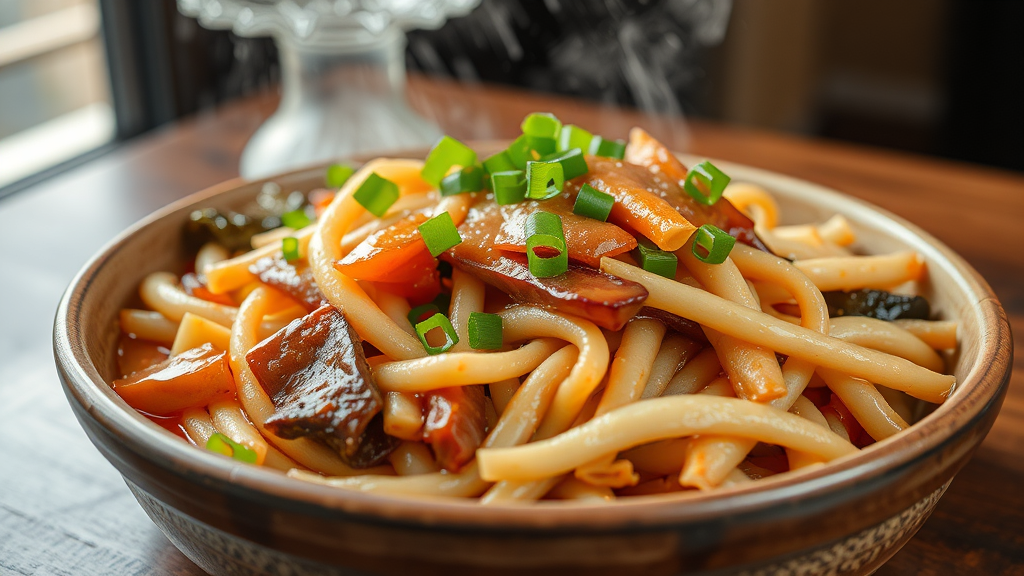


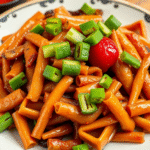
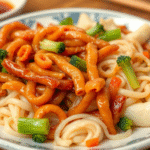
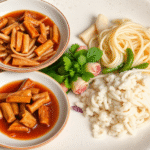
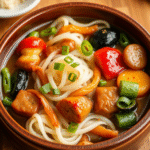
Leave a Reply